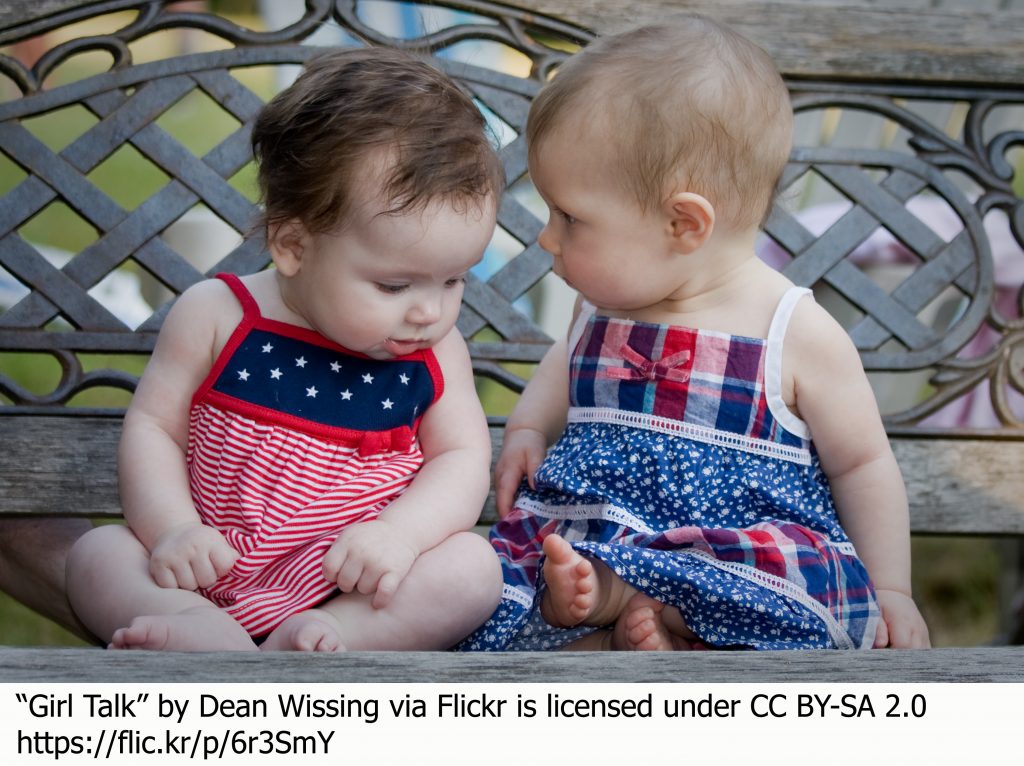
The process of language development in children is an amazing one, and full of so much complexity. Here, we offer 5 fun activity ideas that can help the oral language development of the kids in your home or classroom.
Oral Language and Literacy
So much of language is learned in the early years of life, simply by listening to and interacting with those around us. As time goes by, our oral language skills improve through practice and formal instruction. Oral language is made up of three parts: phonological (how sounds are combined), semantic (the smallest components of words), and syntactic (how sentences are put together).
Literacy begins with good oral language skills. In a classroom setting, it may feel counter-intuitive for a teacher to allow students more time to talk in groups, but there are a number of advantages to doing so. They gain valuable practice with new vocabulary, enhance conversational proficiency, and improve their ability to express their ideas. Also, kids often feel more relaxed when speaking to their peers because they aren’t so worried about giving the “wrong” answer. As such, they are more open to absorbing and learning from what’s being discussed, in turn improving their overall language skills.
Activities for Oral Language Development
No matter the type of activity, keep these guidelines in mind when planning:
- Keep the activity free from anxiety by creating a positive environment to limit the fear of embarrassment.
- Provide clear instructions, possibly in different formats, so that all learning types can understand what’s expected.
- Keep activities engaging by introducing fun or dramatic elements.
- Lastly, remember that kids will need lots of repetition to practice their oral language skills.
Here are 5 activity ideas, from our post about language development in the classroom:
- Mini Circle Chats: Have your students sit in circles of 4 or 5. Give them a list of fun questions that encourage more than single-word answers. Let students know that they can engage in discussions together so they can talk about similarities and differences. If you have a very diverse classroom, ensure that each circle includes a mix of cultures.
- Word Play: Ask students to write 5-10 words (in any language). Have each student share one of their words with the class, and ask the student to explain why he or she chose to write down that word. Does it represent a feeling or an event that took place?
- Memory Drawings: Have students draw their favorite memories, then share with the rest of the class, explaining the different elements of their picture. Or, spread out a long piece of paper and have students draw their memories at the same time on a wall mural. When the time is up, hang the mural up on the wall and let everyone spend a good amount of time looking at it up close and talking about it. Eventually you can have the students sit down on the floor in front of the mural and talk as a group about what they see and what thoughts come to their minds.
- Multicultural Traditions: Have students sit together in a circle to share one of their cultural or family traditions. Then ask others in the circle if they also participate in the tradition with their family and if so, whether or not they celebrate it in the same way. Help students notice that not everyone has the same traditions, and that even the same traditions can be celebrated in different ways.
Differentiated Instruction
For those times when group or peer interaction isn’t realistic, an individualized learning tool like the PENpal Audio Recorder Pen can be invaluable in providing the differentiated instruction needed to help teachers reach every student, of all skill levels, in an effective way. Free video and print resources on the Language Lizard website help educators and parents use the Talking Pen to effectively develop and assess oral language skills, as well as build fluency and improve phonemic awareness with their students.
“Girl Talk” by Dean Wissing via Flickr is licensed under CC BY-SA 2.0 https://flic.kr/p/6r3SmY
We’re linking up with other bloggers to bring you fun ideas and a giveaway!
Enter here for a chance to win a gift card in our Rafflecopter giveaway!
And don’t forget to enter the Giveaway!

















